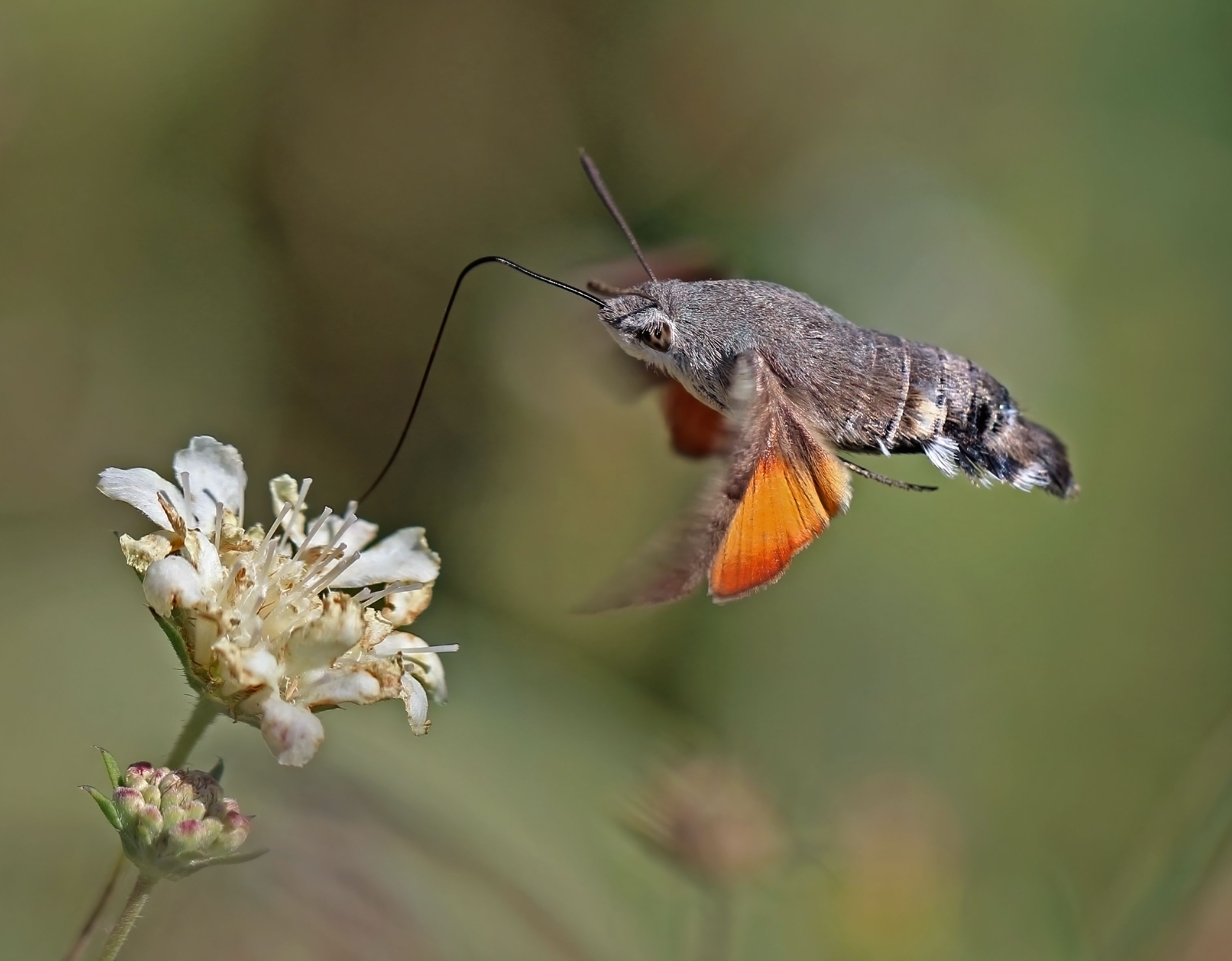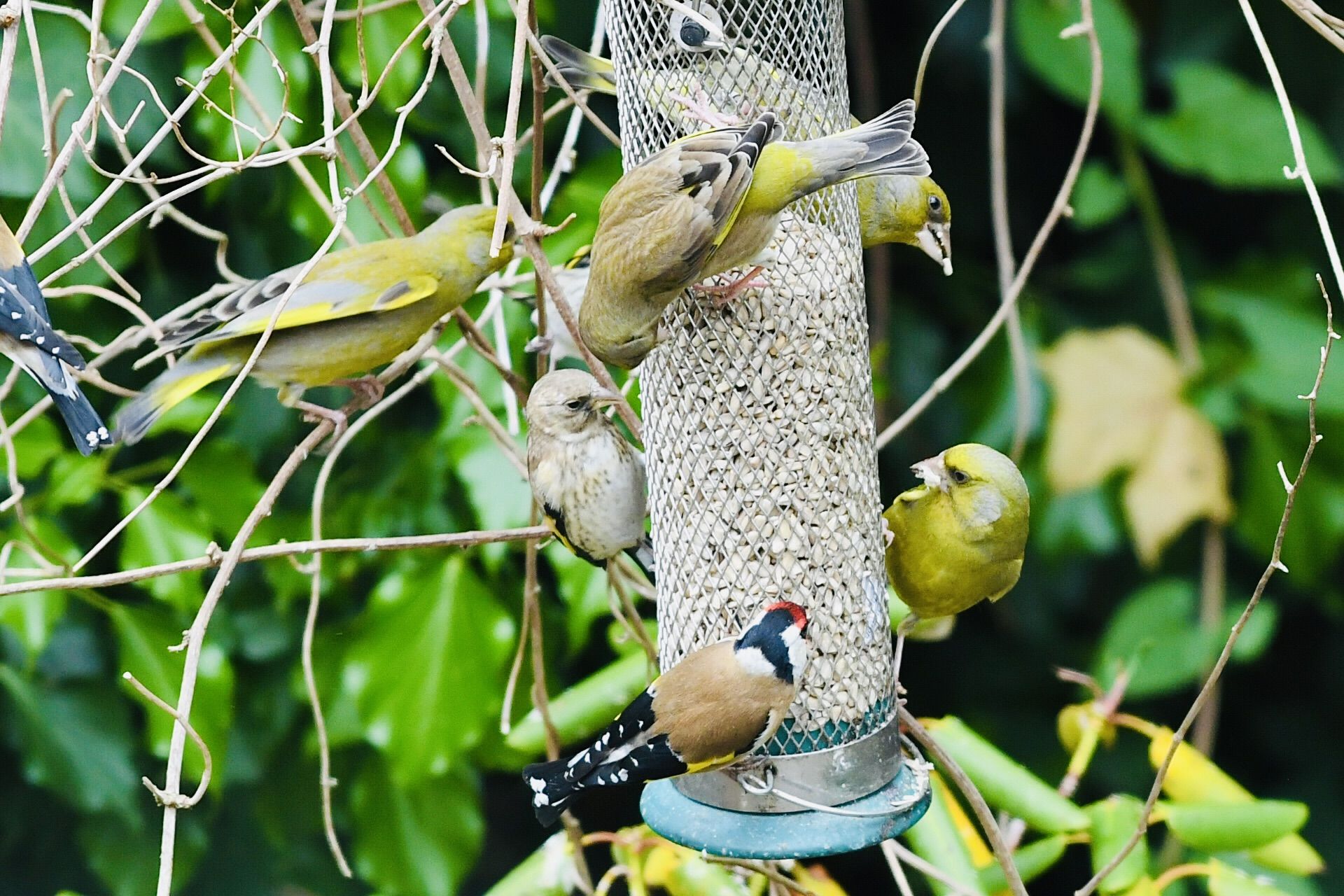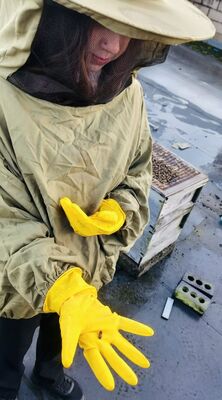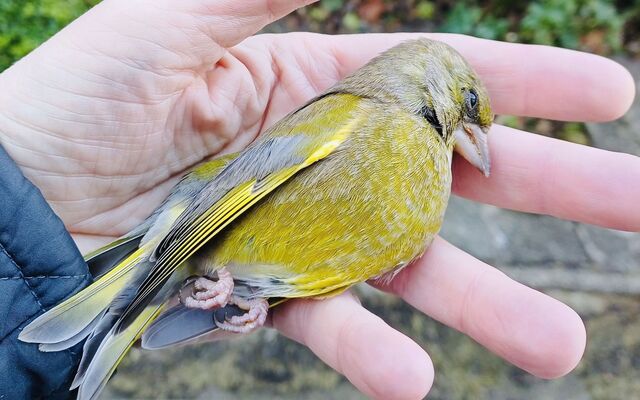FEED them and they will come.
Over the past few weeks Dúlra has been spoiling young finches in the garden knowing they could become like pets – albeit wild ones.
Once they learn at such a young age that there’s food available around the clock, they’ll stick around – and not just for summer, but for life.
He’s refilling the hanging sunflower feeder every morning and dishing out handfuls of seeds on to the lawn every day even though in the height of summer there’s more than enough natural food out there for them. But it’s working. There’s a flock of 30 finches – and growing – permanently posted in the garden.
If they’re startled by a person or a cat or a hawk, they all take to the air above Dúlra’s house like homing pigeons loyally circling their owner’s loft. It’s like he’s got them on a string – after all they are, literally, eating out of his hand.
There are three species that brighten up the garden as they feed in a mixed flock – goldfinches, chaffinches and greenfinches. They all muck about together as if aware that they are all genetic cousins – these finches don’t have any time for robins or blue tits or blackbirds, for example. As specialist seed eaters, they’re a step above in the evolutionary ladder. Each species has developed its own expertise in extracting seeds from various wild plants.
The greenfinch’s larger size and strength along with its hammer-like beak means it’s the boss of the whole gang, bullying the others who have to wait patiently until it decides to leave the sunflower feeder. Goldfinches are as delicate as they are beautiful – their slender beak and light, graceful body mean they can balance on thistle heads and dig deep into them to extract their favourite nyger seeds. And they can do that even in a winter storm when the tall thistles are being tossed about like a rag doll.
But chaffinches might be the smartest of them all – and that’s why they are our most common finch. Their strategy isn’t as complicated as the other two. They don’t need the brute force of the greenfinch or the graceful dexterity of the goldfinch – they just wait below on the ground and mop up the inevitable crumbs that fall from the others!
And that’s how they act in the forest too – chaffinches will live among the leaves, feeding on windfall.
But it’s the kaleidoscope of colours that sets finches apart. These three species span the rainbow, and to see 30 of them on the lawn and feeder outside the kitchen window is mind-blowingly beautiful. It’s something that’s best seen in mid-winter amid the snow on the Belfast Hills, where finches of different species gather together in desperation to find the last of the seeds among the frozen wildflowers. What pleases Dúlra most is that there are so many juvenile birds in the garden. The brightly coloured adults are outnumbered maybe six or seven to one by the drab and naive youngsters, who will moult before summer’s end to be identical to their parents.
These youngsters can be bribed in these formative weeks so they form lifelong habits. The parents, on the other hand, will be used to travelling to our hills when winter hits.
This year, Dúlra won’t be so sad to bid farewell to summer – he’s got a feeling he’s going to be able to enjoy a colourful winter.
• Reader Sam Brady sends in footage of a beautiful hummingbird hawk moth – conach foluana in Irish – feeding on garden flowers near the Upper Newtownards Road. This remarkable moth has actually flown all the way from Europe to Belfast. They migrate northwards from the Mediterranean each spring and in good years they even make it back again!
STRIKING: The hummingbird hawk moth
Dúlra saw one a few years back in his own garden – it’s incredible how it hovers in the air like a hummingbird and uses what looks like a long thin tube to suck out the nectar. With climate change, a small number of these moths have started overwintering here – transforming it from a migratory to a resident species. Sam will be glad to know that when they get a good source of food, they return to it at the same time each day until summer ends – you can set your watch by it!
If you’ve seen or photographed anything interesting, or have any nature questions, you can text Dúlra on 07801 414804.








